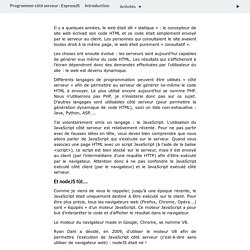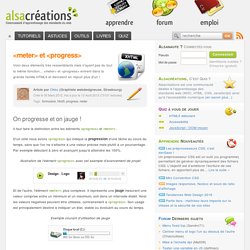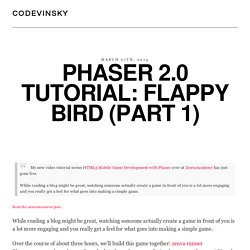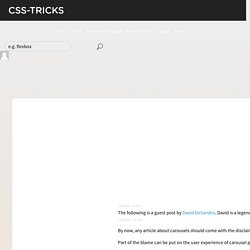

Association humanitaire, loi 1901. Géré par des étudiants du groupe Efrei. Association humanitaire, loi 1901. Géré par des étudiants du groupe Efrei. Programmer côté serveur : ExpressJS. Il y a quelques années, le web était dit « statique » : le concepteur de site web écrivait son code HTML et ce code était simplement envoyé par le serveur au client.

Les personnes qui consultaient le site avaient toutes droit à la même page, le web était purement « consultatif ». Les choses ont ensuite évolué : les serveurs sont aujourd'hui capables de générer eux même du code HTML. Les résultats qui s'afficheront à l'écran dépendront donc des demandes effectuées par l'utilisateur du site : le web est devenu dynamique. Différents langages de programmation peuvent être utilisés « côté serveur » afin de permettre au serveur de générer lui-même le code HTML à envoyer. <meter> et <progress> Voici deux éléments très ressemblants mais n'ayant pas du tout la même fonction...

<meter> et <progress> entrent dans la grande famille HTML5 et devraient en réjouir plus d'un ! On progresse et on jauge ! Il faut faire la distinction entre les éléments <progress> et <meter> . D'un côté nous avons <progress> qui indique la progression d'une tâche au cours du temps, sans que l'on ne s'attache à une valeur précise mais plutôt à un pourcentage. Phaser 2.0 Tutorial: Flappy Bird (Part 1) My new video tutorial series HTML5 Mobile Game Development with Phaser over at ZenvaAcademy has just gone live.

While reading a blog might be great, watching someone actually create a game in front of you is a lot more engaging and you really get a feel for what goes into making a simple game. Read the announcement post While reading a blog might be great, watching someone actually create a game in front of you is a lot more engaging and you really get a feel for what goes into making a simple game. Over the course of about three hours, we’ll build this game together: zenva runner Phaser 2.0 was released recently and a lot of people are wondering how to use the new API and physics systems. I thought it’d be easy and fun to create a real Flappy Bird clone as a tutorial series on how to use the new release of the library.
Here’s the fully playable game we’ll be building: Flappy Bird Reborn Why Flappy Bird? It’s been done to hell and back. Getting Started $ mkdir flappy-bird-reborn && cd $_ Exercices du Cours de JavaScript. "Comment lancer un business en 15 jours avec le Growth Hacking" par Oussama Ammar. Working on simple rpg game for learning - Livecoding.tv. Donation to streamer Donations must be $3, $5, $10, $15 or anything higher.

Channel link: Embed channel with chat: Embed channel: Embed chat: Live Offline You will get an email notification when they go live. You can change your notification settings in your dashboard. Share on Facebook Share on Twitter Livecoding is more fun with friends, add them below and we will send them an invite Total time: 05:11 hrs Sign up now and Join Q&A Live Chat Contact Streamer Send Private Messages Start Broadcasting. Forget normalize or resets; lay your own CSS foundation. Most start their front end styles by throwing in a reset such as Eric Myer's or the more fashionable normalize.css.

I will say a few nasty things about both approaches before I present to you the perfectionist alternative: Your own custom foundation. Foundation is a good word for a different approach. Resets strip user agent default styles back. Normalizing attempts to even out the differences and fix a few things. A foundation strips and adds styles where it makes sense to minimize the amount of declarations and overrides you will have to make later. Shitty things about normalize.css. Web Site Mapping & UX Tool. Rebotify : créer un bot Messenger, Slack ou WhatsApp simplement. Webdocumentaires : liberté et engagement by Florent Maurin on Prezi. Share & Social Semicircles. Font Awesome Icons.
Bento - Learn to code and be a self-taught expert programmer. Material icons. Online Mockup, Wireframe & UI Prototyping Tool · Moqups. Creating responsive, touch-friendly carousels with Flickity. The following is a guest post by David DeSandro.

David is a legend in front-end design and development. He's worked for top agencies like nclud and huge products like Twitter, all the while building amazing open source projects like Masonry and Packery. Lately he's been full time on these open source projects as Metafizzy, the latest one he'll tell you about here. By now, any article about carousels should come with the disclaimer: You may not need a carousel.
Carousels are easily abused. Part of the blame can be put on the user experience of carousel plugins themselves. On top of user-unfriendliness, most carousels plugins have plenty of developer-unfriendly pain points. I've created Flickity to resolve both these issues. Using Flickity To use Flickity, first add its .css and .js files to your page or asset pipeline. Flickity works on a container carousel or gallery element with a group of cell elements. <div class="main-gallery"><div class="gallery-cell">...